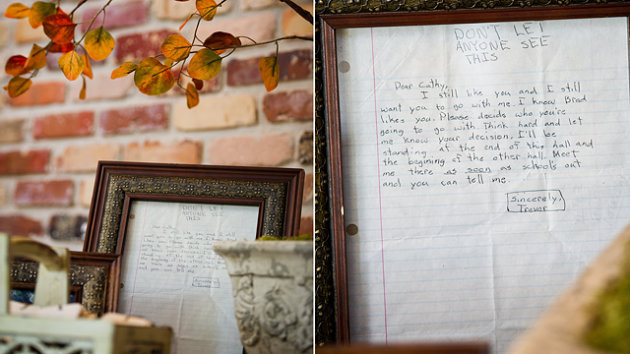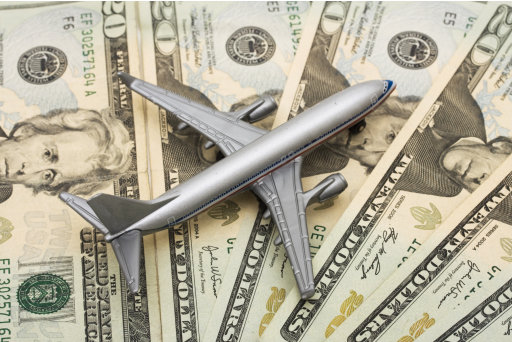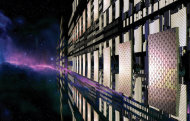Today, with an increasing number of businesses, it goes more like this: You provide something I want, we agree on a price, I pay, then you tack on fees to fatten your bottom line.
Unreasonable fees are more than just a drain on your finances. They’re insulting – the financial equivalent of a cold slap in the face. Check out the following TV news story for some examples, and to see how far I’ll go to illustrate a concept.
Now, in no particular order, here are 10 of the world’s most insulting fees. They made my list for one of three reasons: They’re unreasonable, you’re getting little or nothing in return, or they’re ridiculously overpriced.
Airlines
1. Checked baggage fees :
Most major carriers charge $25 to check one suitcase – a lot more if it’s oversized, overweight, or both.
This fee didn’t exist until recent years, and for good reason: The price of a plane ticket should obviously include luggage. Isn’t that an integral part of traveling long distance? No other travel-related services – buses, trains, hotels, cabs, rental cars - charge for luggage. This isn’t a fee – it’s a sophomoric attempt to disguise a higher price.
Workaround: There are two major airlines that don’t charge this insulting fee: Southwest and JetBlue. Fly them if you can. If you can’t, check this chart or one like it to see how much your airline is charging and use that as an incentive to pack light.
Some airlines also allow you to avoid baggage fees by using their branded credit cards.
2. Carry-on baggage fees:
At least when you pay to check a bag, there’s a service involved. Someone has to load it, unload it, and make sure it gets safely back into your hands. Charging for a carry-on bag is charging for nothing whatsoever. Nobody is touching your bag but you, and making this fee indefensible. Fortunately, Spirit and Allegiant are the only airlines that do it, at least so far.
Workaround: Avoid flying Spirit, Allegiant, or any airline that charges for doing nothing. If they’re the only airlines available, drive. If that’s impossible, check with UPS or another freight carrier about shipping bags.
3. Lap fees, pet fees:
If you’ve got a child less than 2, it’s typically free to carry them on your lap for a domestic flight. Leave the country, however, and you might pay a “lap fee” of 10 percent of the ticket cost. And not the cost of your ticket: a full-fare ticket – the most expensive available. Delta, United, US Airways, and American all have some form of this policy, and for what? The airline is performing no service: no extra room, no assistance, nothing.
Ditto when you’re flying with Fido. If you have to ship your pet in the baggage compartment, you’d expect a handling fee. But bring them with you in the cabin, and you’ll pay up to $125 each way – and the carrier counts as a carry-on. Again, the airline is doing nothing, but collecting a hefty fee.
Workaround: Check with the airline before you book the ticket to see what fees, if any, you can expect. If they’re high, shop around: Some airlines charge less than others.
Rental cars
4. Collision Damage Waiver (CDW):
This is the pricey insurance replacement you’re hammered with whenever you rent a car. If you’re not fully insured in rental cars, some type of protection is absolutely necessary. But CDW makes the list of insulting fees because it’s overpriced: It can cost $25 a day. Add extra liability coverage, and you could be paying $40. That’s the equivalent of a car policy that costs $14,600 a year, with lousy coverage. For example, CDW often refuses to pay if there’s an unauthorized driver, you’re intoxicated or in other situations.
Workaround: If you have full-coverage insurance on your personal car, you’re probably covered in rentals. There’s also coverage available through some credit cards as well. Check both sources to see if you can skip this overpriced coverage at the rental counter. Be aware, however, that even if you have insurance on your car, you could still be on the hook for “loss of use” claims by the rental car company if you have an accident that takes the car out of service.
If you’re using a credit card protection plan, be aware that not all rentals are covered. For example, pickups and vans are often specifically excluded. The devil is in the details – don’t leave home without them. And don’t buy any coverage at the rental car counter without fully understanding the exclusions.
Banks
5. Credit card rates :
While technically not a fee, the interest rates charged by many credit cards is outrageous. Big banks borrow from the Federal Reserve at close to zero percent, then lend money to credit card users at 15 percent. Nice work if you can get it.
Workaround : The obvious solution is to avoid interest by avoiding a balance. But if you’re going to pay interest, shop for a card with a lower rate. Another idea? Simply call your card company and ask for a better deal. Tell them you’re being solicited by other cards offering lower rates, because you probably are.
6. Foreign transaction fees:
This is a fee charged on credit card purchases processed outside the United States; for example, when you use your card in Europe, or to buy something from a non-U.S. company. Banks that charge them typically collect 3 percent of every transaction. The implication of this insulting fee is that it’s related to the intricacies of currency conversion. But lawsuits have revealed these fees are nearly pure profit: money for nothing.
Workaround : If there’s any chance you’ll be making purchases outside the United States, use a card that doesn’t charge this fee. There are plenty to choose from: See Overseas With No Credit Card Fees.
7. Overdraft fees:
If you overdraw your account and the bank uses its money to cover your negative balance, it deserves to be compensated. But how much? According to this article at CNBC, overdraft fees average from $30 to $34 nationwide. Charging $34 for a one-week loan on the average overdraft of $36 equates to an annual rate of 5,000 percent.
Workaround: Link your savings to your checking account for overdraft protection. This might result in a transfer fee, but it will be lower than an overdraft fee.
8. Checking, loan, and other banking fees:
Not paying interest on your checking account is bad enough. But now banks want you to pay – often upwards of $100 a year – just to have an account. Want a paper statement? Not long ago that was your only choice. Now it will cost you. Why should you pay to use an ATM, even another bank’s? You’re saving the bank money, not costing them. When you use the automated checkout at the grocery, they don’t charge a fee. Banks shouldn’t either.
Workaround: There’s no reason to get slapped around by any bank. If you hate yours, ditch it. Credit unions typically charge lower interest on loans and credit cards, pay more interest on savings, and have lower overall fees than banks. Think they don’t have enough branches? You’re probably wrong. Many credit unions belong to a shared branch network of nearly 5,000 locations that allows members of one credit union to conduct business at any other member credit union anywhere in the country – even overseas. And when it comes to finding the nearest participating credit union? Yes, there’s an app for that.
Hotels
9. Resort fees:
The concept of paying to stay at a hotel, then paying more to use on-site amenities is ridiculous. The FTC recently sent a warning letter to 22 hotels, accusing them of potentially violating the law by bumping up the prices listed on their online reservation sites with hidden fees. From their press release…
One common complaint consumers raised involved mandatory fees hotels charge for amenities such as newspapers, use of onsite exercise or pool facilities, or Internet access, sometimes referred to as ‘resort fees.’ These mandatory fees can be as high as $30 per night, a sum that could certainly affect consumer purchasing decisions. The warning letters also state that consumers often did not know they would be required to pay resort fees in addition to the quoted hotel rate.
Workaround: Before you book a reservation, find out in advance what fees you’ll be expected to pay, and if you hear something you don’t like, just say no. In 8 Tips to Save at Any Hotel – Even the Nation’s Trendiest, I suggested a tactic I’ve been using to get better hotel pricing for decades: negotiate. Explain that you’re a good customer, don’t find the fees fair, and would like a lower price. Just make sure you’re talking to a front-desk decision-maker, not an 800-number.
10. Internet service:
When the Internet and Wi-Fi were new, perhaps it was justifiable to charge a fee to access it. These days, charging for Internet access makes as much sense as charging for the in-room TV or air conditioning. $15 a day? Give me a break.
Workaround: If you can’t find a hotel with free Wi-Fi, ask to have the fee waived when you check in. If that’s not an option, find it free elsewhere – either in the lobby or a nearby hotspot. Free apps like WeFi, available for iPhone and Android, will help you find one.
The bottom line
When I write articles that include lists and have titles starting with “10 tips” or “10 things,” it’s often tough to fill the list. But not with this article. I could have mentioned Ticketmaster, car dealers, gift cards, cell phone companies, schools, and mutual funds, and lots more.
So what do you think? Am I being too hard on these businesses? What’s the most annoying fee you’ve paid? Sound off below or on our Facebook page. It doesn’t cost a thing. ( Money Talks News )










